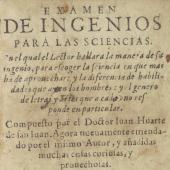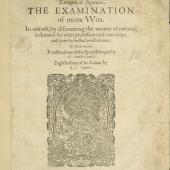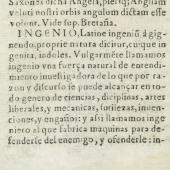The 'ingenious' Don Quijote
Fighting windmills: the many interpretations of Don Quixote
As most readers know, in the title of both the first and second parts of the novel Cervantes qualifies Don Quijote as “ingenioso”. Much has been argued about this characterization. Is it a reference to the protagonist’s inventive re-imagining of the world around him? Is it a parody of the grandiloquent titles used in chivalric novels?
Associated with talent and creativity, but also with cunning and madness, ingenuity (“ingenio” in Spanish) was the subject of considerable debate and theorization in Cervantes’ age. For example: what explained the seemingly natural predisposition of certain individuals for certain tasks, e. g. poetry or painting? Was one born with these capacities, or could they be learned and trained? At a different level: which attributes and behaviours were characteristic of the ingenious individual? And, similarly, how did certain practices and products come to be typified as ingenious and appreciated as such?
This section explores aspects of the early modern culture of ingenuity that would have been familiar to both Cervantes and his readers, and which might have played an important role in the configuration and reception of Don Quijote as a character.
Dr. José Ramón Marcaida – Research project ‘Genius Before Romanticism: Ingenuity in Early Modern Art and Science’ (ERC 617391) – CRASSH, University of Cambridge



